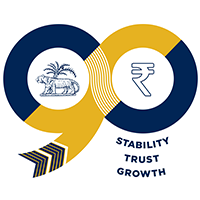Contents - ربی - Reserve Bank of India
 IST,
IST,
rbi.page.title.1
rbi.page.title.2
83734649
شائع کیا گیا پر
اپریل 29, 2022
Contents
| Sr. No. | |
| Chapter I: Scars of the Pandemic | |
| 1 | Introduction |
| 2 | Pre-COVID Slowdown |
| 3 | Post-COVID Economic Scenario |
| 4 | Risks to Recovery |
| Chapter II: Rebalancing Monetary and Fiscal Policies Post-Pandemic | |
| 1 | Introduction |
| 2 | Impact of Policy Stimulus on Growth |
| 3 | Lessons from India’s Own Experience |
| 4 | Post-COVID Debt Overhang: Debt Consolidation for Stronger Economic Growth |
| 5 | Conclusion |
| Chapter III: Structural Issues in Rejuvenating Growth | |
| 1 | Introduction |
| 2 | Structural Transformation in India |
| 3 | Productivity Trends |
| 4 | Structural Impediments in Key Sectors |
| 5 | Structural Growth Enablers |
| 6 | Factor Market Impediments |
| 7 | Conclusion |
| Chapter IV: Harnessing Open Economy Vistas for Faster Growth | |
| 1 | Introduction |
| 2 | Trade Openness, Export Competitiveness and Growth |
| 3 | Role of Imports |
| 4 | Capital Flows, Exchange Rate and Growth |
| 5 | Conclusion |
| Chapter V: The Role of Finance in Revitalising Growth | |
| 1 | Introduction |
| 2 | COVID Impact on the Indian Financial System |
| 3 | Pre-COVID Financial Intermediation Challenges |
| 4 | Reinvigorating Credit Growth—Policy Options |
| 5 | Leveraging Digital Finance and Start-ups for Reinvigorating Growth |
| 6 | Green Finance for Sustainable growth |
| 7 | Conclusion and Way Forward |
| Chapter VI: A Policy Agenda for Post-COVID-19 India | |
| LIST OF BOXES | |
| Sr. No. | |
| I.1 | Did COVID-19 Expose Pre-existing Weakness in Corporate Balance Sheet? |
| I.2 | COVID-19 Shock - Relative Impact on Demand and Supply |
| II.1 | Debt Impact on Risk Premium |
| II.2 | Limits to Consolidation of Public Debt in India Post-Pandemic |
| III.1 | Structural Determinants of TFP Growth in India |
| III.2 | Resource Reallocation for Higher Productivity Growth |
| III.3 | Determinants of TFP Growth in Indian Agriculture |
| III.4 | Ease of Doing Business in India and Future Reforms |
| IV.1 | Dynamic Foreign Trade Multiplier of India |
| IV.2 | Country and Product Identification Strategy for Enhancing India’s Export Potential |
| IV.3 | India’s Free Trade Agreements – For Trade Creation or Diversion? |
| IV.4 | Impact of Foreign Capital on Growth |
| IV.5 | Composition of Capital Inflows and Growth |
| IV.6 | Impact of Exchange Rate Movements on Exporting Firms |
| V.1 | Financial Conditions Index (FCI) and Growth |
| V.2 | Optimal Credit Growth in India |
| LIST OF TABLES | |
| Sr. No. | |
| I.1 | Episodes of Boom and Bust |
| I.2 | Sector-wise Recovery Pattern |
| II.1 | Overall Fiscal Multipliers |
| II.2 | Asymmetric Fiscal Multipliers |
| II.3 | Relationship Between Debt and Economic Growth |
| III.1 | International Trade in Ores & Minerals from 2015-16 to 2019-20 |
| III.2 | A Broad-based Slowdown in Services |
| III.3 | Components of Construction - Share in Output (in per cent) |
| III.4 | Trend of Key Infrastructure Capacity (2011=100) |
| III.5 | Share of Infrastructure Sector in Real GVA and GFCF |
| III.6 | Investment in Electricity Infrastructure by the Public Sector |
| III.7 | State-wise Estimates of Potential for Solar and Wind Energy |
| III.8 | Price of Electricity for Businesses (US cents per kWh) |
| III.9 | Vision 2025 for the Healthcare Sector |
| III.10 | Sector-wise Labour Productivity |
| IV.1 | Country-wise Profile of India’s Export Partners |
| IV.2 | Change in Revealed Comparative Advantage (2010-20 over 2001-09) |
| IV.3 | Trade Complementarity Index |
| IV.4 | Frontier Technologies, Description and Early Adopters |
| IV.5 | Trade and Research and Development Statistics for India |
| IV.6 | Commodities with High Import Dependence on China and Alternative Suppliers |
| IV.7 | Exchange Rate, Competitiveness and Exports Volume – FMOLS Estimates |
| V.1 | Impact of COVID-19 on Key Banking Indicators |
| LIST OF CHARTS | |
| Sr. No. | |
| I.1 | Movement in Consumption and Investment |
| I.2 | Employment and Wages |
| I.3 | Gross Capital Formation by Institutional Sectors |
| I.4 | Top 15 Countries Affected by COVID-19 |
| I.5 | Vaccination Programme in India |
| I.6 | Cross-country GDP Growth in 2020-21 |
| I.7 | Stringency Measure and GDP Growth in 2020-21 |
| I.8 | Factors Contributing to the Deepest Slowdown |
| I.9 | Economic Activity Index |
| I.10 | Recovery in Demand and Output |
| I.11 | Growth in Private Consumption |
| I.12 | Current Situation Index (CSI) and Future Expectations Index (FEI) |
| I.13 | Labour Market Condition during the Pandemic |
| I.14 | Activity Status in Urban Areas during the Pandemic |
| I.15 | Investment Demand |
| I.16 | Capacity Utilisation in Manufacturing |
| I.17 | Business Assessment Index and Business Expectations Index |
| I.18 | Corporate Performance During the COVID-19 Pandemic |
| I.19 | Sector-wise Impact of the Pandemic |
| I.20 | Sector-wise Growth in Manufacturing GVA |
| I.21 | Organised and Unorganised Services Sectors |
| I.22 | Structural Breaks in GDP |
| I.23 | Medium-term Real GDP Path |
| II.1 | Impulse Responses to one S.D. Policy Shock |
| II.2 | Asymmetric Responses of GDP Growth to Policy Shock |
| II.3 | Surplus Liquidity Impact on Inflation – Estimated Threshold Effects |
| II.4 | Surplus Liquidity Impact on Inflation – Estimated Time-Varying Effects |
| II.5 | Asymmetric Response of Inflation to One Percentage Point Change in WACR |
| II.6 | Scope for Monetary Accommodation of Fiscal Stance |
| II.7 | Financing of Fiscal Deficit through Net RBI Credit to the Government |
| II.8 | Weighted Average Cost of Borrowing (Central Government) |
| II.9 | Response of Term Premia to One Percentage Point Increase in Net LAF to NDTL Ratio |
| II.10 | Relationship between Inflation and Output Gap in India (1996-97:Q1 to 2019-20:Q4) |
| II.11 | General Government Outstanding Liabilities |
| II.12 | Interest Payments on Government Debt |
| II.13 | India's Decadal Debt Decomposition |
| III.1 | Sectoral Shares in Real GVA |
| III.2 | Dependence on Agriculture for Employment |
| III.3 | Capital Concentration in Industry |
| III.4 | Capital Stock Per Worker |
| III.5 | Components of Manufacturing GVA |
| III.6 | Sectoral Decompostion of Total Exports |
| III.7 | An Accelerated Growth in Urban Population |
| III.8 | Total Factor Productivity Growth - Global Trends |
| III.9 | Labour Productivity Growth-Global Trends |
| III.10 | Decomposition of GDP Growth in India |
| III.11 | Sectoral Drivers of TFP Growth (YoY) in India |
| III.12 | Indicators for Innovation and Productivity-Global Comparison |
| III.13 | Growth in Agricultural Production and GVA |
| III.14 | India’s Share in World Agriculture and Merchandise Trade |
| III.15 | GCF and R&D in Agriculture |
| III.16 | Cross-Country Comparison of Average TFP Growth and Crop Yields |
| III.17 | Agricultural Credit in India - Size and Composition |
| III.18 | Ratio of Agriculture Credit to State GVA |
| III.19 | Cropping Intensity and Irrigation Coverage Appears to have Plateaued |
| III.20 | Skewed Development in the Sources of Irrigation |
| III.21 | Crop-wise Share in Gross Irrigated Area |
| III.22 | Trend of Input Subsidies and Public Gross Capital Formation in Agriculture |
| III.23 | Order of Self Sufficiency |
| III.24 | GDP Size vs. Mining Share |
| III.25 | Index of Coal, Crude Oil and Natural Gas Production |
| III.26 | Growth Rate of GDP and Manufacturing |
| III.27 | Impact of Manufacturing over Services |
| III.28 | Electricity Consumption: Industry vs. Others |
| III.29 | Services Growth |
| III.30 | Housing Sales, Launches and Pricing |
| III.31 | Competitiveness Index and Infrastructure Index |
| III.32 | Revenue Gap, Transmission Losses, and Power Subsidies |
| III.33 | Literacy Trends |
| III.34 | Gross Enrollment Ratio |
| III.35 | Health Infrastructure - India vs. Peers |
| III.36 | Delayed Projects |
| III.37 | Cost Overrun of Delayed Projects |
| III.38 | Labour Force Participation Rate 2019-20 |
| III.39 | High Self-Employment |
| III.40 | Job Quality - Status of Written Job Contract |
| III.41 | Low Level of Job Training |
| III.42 | Education Profile of India |
| IV.1 | Net Exports of Goods and Services |
| IV.2 | Profile of India's Major Trading Partners |
| IV.3 | Growth and Trade Performance – India versus World |
| IV.4 | Trade Performance of Major Economies – Income and Substitution Effect |
| IV.5 | Sectoral Shifts in Revealed Comparative Advantage |
| IV.6 | Revealed Comparative Advantage Index – Merchandise |
| IV.7 | Revealed Comparative Advantage Index – Services |
| IV.8 | India’s Services Exports – Diversification |
| IV.9 | Services Trade Openness and Export Performance |
| IV.10 | Export Diversification by Market – India vis-a-vis China and the US |
| IV.11 | Expected Market Size of Frontier Technologies |
| IV.12 | Import Content of Exports (ICE) Matters for Export Intensity and GVC Participation |
| IV.13 | India at the Bottom as Capital Goods Importer Among Major Economies |
| IV.14 | Tariff Profile of India’s Imports |
| IV.15 | Utilisation of Net Capital Inflows |
| IV.16 | Regulatory Easing of FDI in India since 1990s |
| IV.17 | Export Sectors with High Capital Requirement |
| V.1 | Impact of COVID-19 on Financial Intermediation |
| V.2 | Stress in Large Borrowal Accounts |
| V.3 | Stock Indices - Movements |
| V.4 | Resource Mobilisation through Public and Rights Issues of Equities |
| V.5 | Corporate Bond Market |
| V.6 | Flow of Resources-to-GDP Gap |
| V.7 | Trends in Savings and Deposits |
| V.8 | Corporate Leverage in India |
| V.9 | Credit Growth and Banking Sector Stress |
| V.10 | SCBs’ Investment and Credit |
| V.11 | Sectoral Credit and Retail NPAs |
| V.12 | NPA Recovery Channels |
| V.13 | Capital Infusion by the Government in PSBs |
| V.14 | Moving Towards Digital India |
| V.15 | Google Searches on Green Finance |
| VI.1 | Medium-term Growth Scenarios |
PLAYING
LISTEN
صفحے پر آخری اپ ڈیٹ: null
یہ صفحہ مددگار تھا؟


















